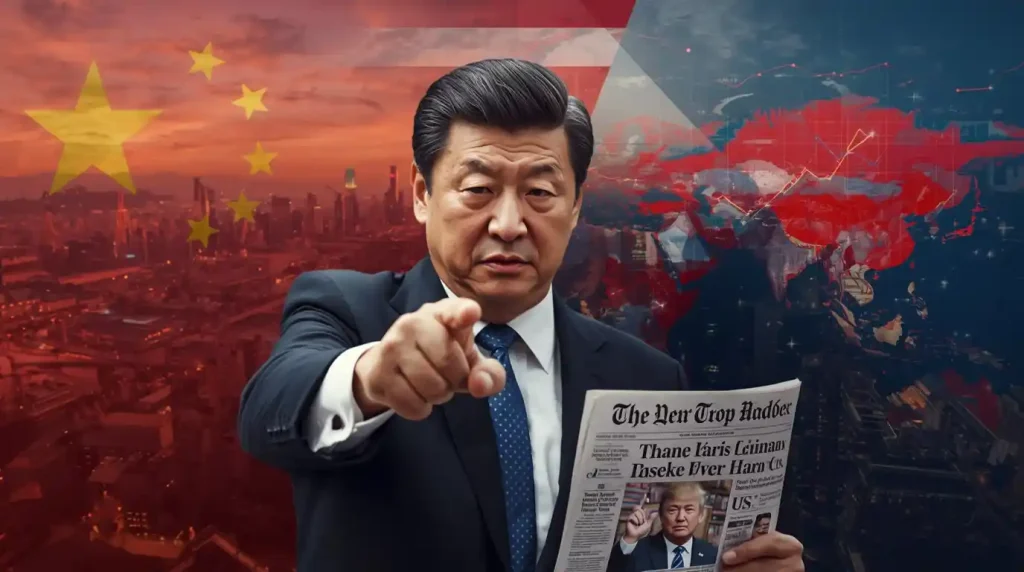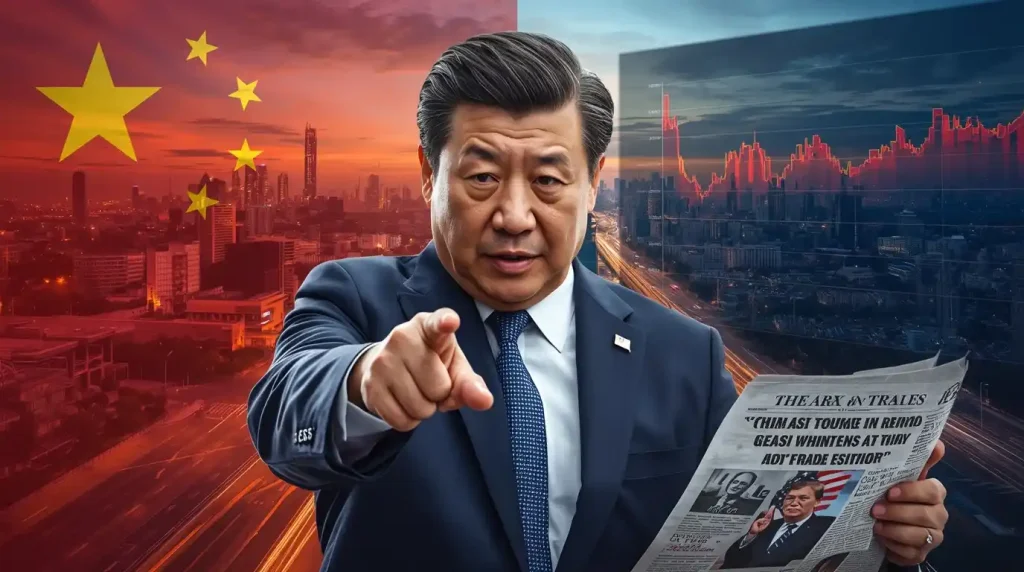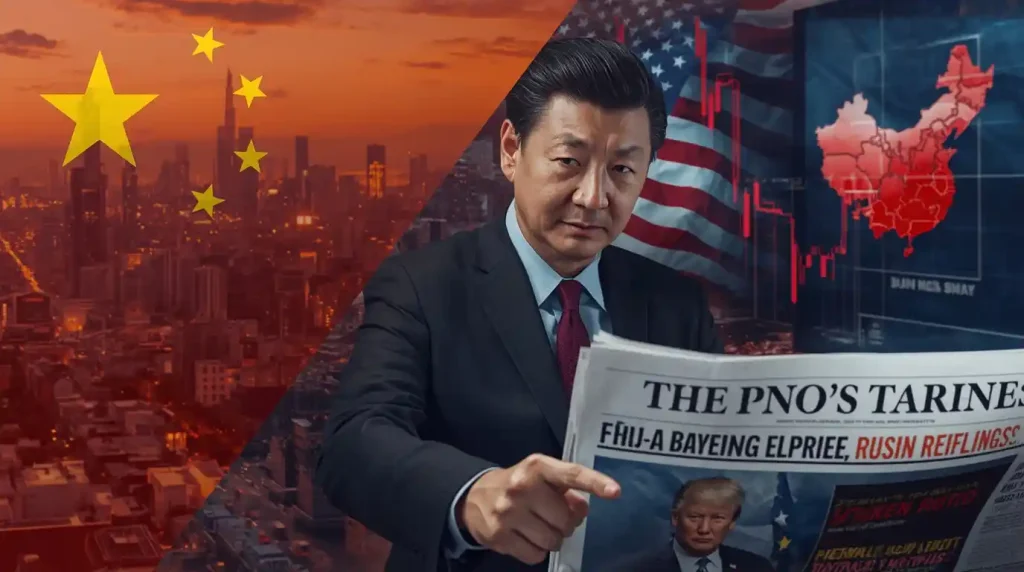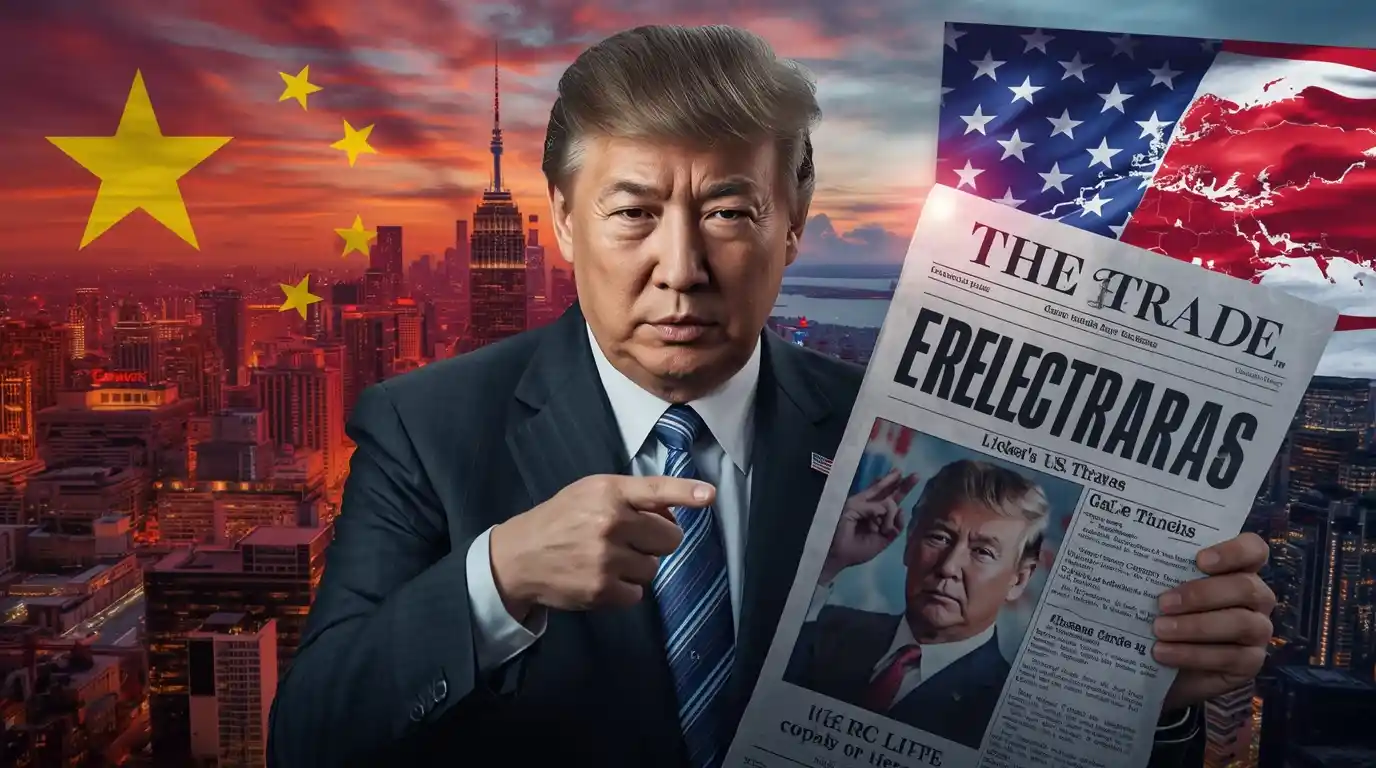A new and volatile chapter in the global economic showdown has begun, and the blame game is in full swing. In a stark official statement, Beijing has categorically denied being the aggressor, asserting that the latest wave of disruptive economic conflict was unilaterally initiated by the United States. The core of their argument is simple yet profound: they did not restart the fight.
This latest eruption of China US trade tensions has sent shockwaves through international markets, but the narrative of who is at fault is fiercely contested. As supply chains brace for impact and investors watch in anxiety, understanding the genesis of this new phase is critical. The re-ignition of China US trade tensions marks a dangerous escalation, with China positioning itself as the responding party to what it labels American provocation.
1. The Provocation: Trump’s Tariff Gambit
The fuse for the latest explosion in China US trade tensions was lit not in Beijing, but in Washington. The administration of former President Donald Trump, upon his return to office, moved swiftly to implement a sweeping new tariff regime targeting Chinese imports. This wasn’t a minor adjustment; it was a broadside aimed at core sectors of the Chinese economy.
The new tariffs, which cover everything from consumer electronics and semiconductors to agricultural products, are designed to pressure China’s manufacturing-led growth model. The Trump administration’s rationale, consistent with his first term, is to address the longstanding U.S. trade deficit with China and combat practices it deems unfair, such as intellectual property theft and state subsidies to domestic companies. However, the scale and suddenness of the move have been interpreted by global economists as a deliberate escalation.
This unilateral action effectively tore up the fragile understandings that had been in place, directly triggering the current cycle of China US trade tensions. By making the first major move, the U.S. has, in the eyes of the international community and Beijing, taken responsibility for restarting the trade war.

China’s Retort: A Denial and a Strategic Response
China’s response has been a masterclass in diplomatic rhetoric and strategic positioning. Instead of immediately matching the U.S. move tit-for-tat with equivalent tariffs, Beijing first issued a forceful denial. Chinese Foreign Ministry spokespersons and state-run media have consistently pushed the narrative that China is a victim of American instability and protectionism.
A spokesperson for the Chinese Ministry of Commerce stated, “China US trade tensions are not of our making. We have always been a steadfast advocate for free trade and multilateralism. It is the irresponsible and unpredictable actions of the U.S. side that have forced us into a position where we must respond to protect our national interests and the integrity of the global trading system.”
This framing is crucial. It allows China to portray itself as the responsible global actor and the U.S. as the disruptive force. This public relations campaign is a key weapon in the broader conflict, aimed at winning the sympathy of other nations and driving a wedge between the U.S. and its allies. The resurgence of China US trade tensions is therefore not just an economic battle, but a battle for global narrative supremacy.
3. The Rare Earth Gambit: Beijing’s Nuclear Option
While China has denied starting the conflict, its chosen method of retaliation reveals a great deal about its strategic calculus. Instead of merely imposing tariffs on American soybeans or aircraft, Beijing has signaled a move that strikes at the heart of modern technology: restricting the export of rare earth elements.
Rare earth minerals are a group of 17 elements critical for manufacturing a vast range of high-tech products, including smartphones, electric vehicles, wind turbines, and most importantly, advanced military hardware. China dominates the global supply chain for these materials, controlling over 80% of the world’s refining capacity. As analyzed by Reuters, this dominance gives Beijing a powerful asymmetric advantage.
The threat of rare earth export controls is often considered China’s “nuclear option” in trade disputes. By deploying this threat so early in the renewed China US trade tensions, Beijing is sending a clear message: it will not fight on America’s terms and is prepared to leverage its unique strengths to inflict maximum pain, disrupting global supply chains far beyond U.S. borders.

4. Economic Fallout: Global Markets on Edge
The re-ignition of China US trade tensions has immediately translated into tangible economic anxiety. Global stock markets have experienced heightened volatility, with technology and industrial sectors taking a particular hit. The MSCI World Index has seen sharp sell-offs, and commodity prices have fluctuated wildly as traders attempt to price in the new risk.
For the United States, the immediate impact is likely to be higher prices for consumers. Tariffs on Chinese goods function as a tax on American importers, a cost that is often passed down to consumers in the form of inflated retail prices. This could pour fuel on the fire of existing inflationary pressures. For China, the challenge is maintaining economic growth and stability in the face of reduced access to its largest export market. The renewed China US trade tensions threaten to slow global GDP growth, as the International Monetary Fund has repeatedly warned. The uncertainty forces multinational corporations to reconsider their investment and supply chain strategies, potentially leading to a costly and inefficient “bifurcation” of global production.
5. A Historical Lookback: From Truce to Trouble
To fully grasp the significance of the current crisis, one must view it as the second act of a play that never properly ended. The first chapter of major China US trade tensions ran from 2018 to 2020, during Trump’s first term. That period saw the U.S. impose tariffs on hundreds of billions of dollars of Chinese goods, and China respond in kind.
The conflict was partially paused with the “Phase One” trade deal in January 2020. This agreement committed China to purchasing hundreds of billions in additional U.S. goods and offered some protections for intellectual property. However, it left the most contentious structural issues unresolved. Many analysts, including those from the Peterson Institute for International Economics, argued the deal was a fragile truce, not a lasting peace. The current escalation proves that assessment correct. The underlying grievances were merely frozen, and the return of Trump to the White House has thawed them with a vengeance. The new China US trade tensions are therefore a continuation of the same fundamental struggle over economic and technological supremacy.

Internal Resource: The Phase One Trade Deal: An Autopsy
6. What’s Next? Scenarios for a Deepening Conflict
The path forward is fraught with risk. The escalation of China US trade tensions could follow several potential trajectories, each with profound implications for the global order.
- Scenario 1: A Protracted Tech Cold War. The conflict evolves beyond tariffs into a full-scale technological decoupling. The U.S. tightens restrictions on semiconductor exports to China, while China accelerates its “dual circulation” policy aimed at technological self-sufficiency. The global internet and tech standards could splinter into separate American and Chinese spheres.
- Scenario 2: A Spreading Conflict. The China US trade tensions could spill over into military and geopolitical flashpoints. Increased friction in the South China Sea or the Taiwan Strait becomes more likely as economic hostility fuels broader strategic distrust.
- Scenario 3: A Negotiated Calm (Unlikely in the Short Term). After a period of economic pain, both sides could be forced back to the negotiating table. However, given the hardened positions and the focus on core national security issues, a comprehensive deal that ends the China US trade tensions permanently remains a distant prospect.
7. Conclusion: The World Holds Its Breath
The world is now watching a slow-motion economic collision between two superpowers. China’s firm denial of responsibility for restarting the conflict is a central pillar of its strategy, framing the U.S. as an unpredictable and aggressive actor. The decision by the Trump administration to launch a new wave of tariffs has unequivocally reignited the China US trade tensions, pulling the global economy back into a state of uncertainty and risk.
This is more than a simple dispute over tariffs; it is a struggle for narrative control, technological dominance, and the future shape of the global order. The use of the rare earth card signals that Beijing is prepared for a brutal, protracted fight. As the China US trade tensions continue to escalate, the collateral damage will be felt in every corner of the interconnected global economy. The question is no longer if there will be economic pain, but how severe it will be and how long the world will have to endure it.
Table of Contents
Our Related News Website:
Sports: Sport Flash
World News: The News Grid
Environment News: Eco Alert
Business News: Biz Trend Now
Dailt News: Unbiased Daily
Realm News: Real Time Realm
Retrun to our Homepage
